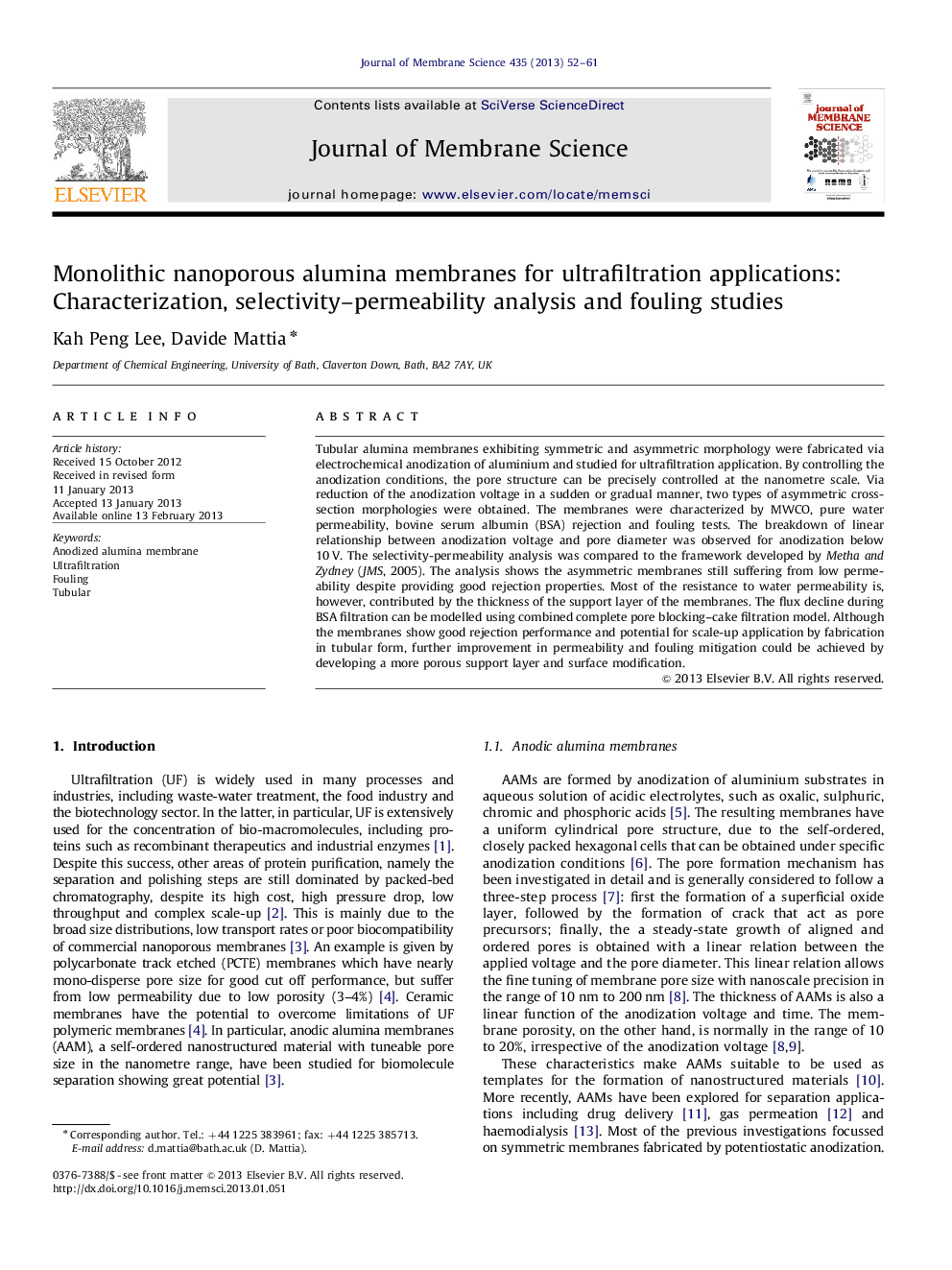| Article ID | Journal | Published Year | Pages | File Type |
|---|---|---|---|---|
| 634447 | Journal of Membrane Science | 2013 | 10 Pages |
Tubular alumina membranes exhibiting symmetric and asymmetric morphology were fabricated via electrochemical anodization of aluminium and studied for ultrafiltration application. By controlling the anodization conditions, the pore structure can be precisely controlled at the nanometre scale. Via reduction of the anodization voltage in a sudden or gradual manner, two types of asymmetric cross-section morphologies were obtained. The membranes were characterized by MWCO, pure water permeability, bovine serum albumin (BSA) rejection and fouling tests. The breakdown of linear relationship between anodization voltage and pore diameter was observed for anodization below 10 V. The selectivity-permeability analysis was compared to the framework developed by Metha and Zydney (JMS, 2005). The analysis shows the asymmetric membranes still suffering from low permeability despite providing good rejection properties. Most of the resistance to water permeability is, however, contributed by the thickness of the support layer of the membranes. The flux decline during BSA filtration can be modelled using combined complete pore blocking–cake filtration model. Although the membranes show good rejection performance and potential for scale-up application by fabrication in tubular form, further improvement in permeability and fouling mitigation could be achieved by developing a more porous support layer and surface modification.
Graphical abstractFigure optionsDownload full-size imageDownload high-quality image (279 K)Download as PowerPoint slideHighlights► Fabrication of tubular asymmetric anodized alumina membranes for ultrafiltration applications. ► The membranes have uniform pore structure which is readily controllable. ► The membranes exhibit good bovine serum albumin rejection.
